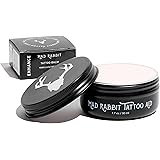The nuanced art of letterform creation is often explored through detailed demonstrations, much like the accompanying video which skillfully presents the Letter B in 3 styles. For those immersed in the disciplines of graphic design, typography, or hand lettering, the challenge frequently lies in transcending mere legibility to infuse letterforms with distinct character and purpose. It is a common dilemma for designers to achieve both versatility and specificity in their typographic choices, ensuring that each character not only conveys information but also evokes the intended emotion and brand identity. Fortunately, a comprehensive understanding of foundational typographic principles and the underlying structure of letterforms can unlock a vast spectrum of creative possibilities, providing the toolkit necessary to master such stylistic variations.
This deep dive into the subject will illuminate the intricate mechanics behind letterform design, moving beyond surface-level aesthetics to the core elements that dictate a letter’s style. By dissecting the anatomy of a character, such as the ubiquitous ‘B’, one gains the insights required to intentionally manipulate its form for diverse applications. The aim is to equip you with an advanced perspective on how subtle alterations can profoundly impact visual communication, transforming a simple letter into a powerful design element. Furthermore, a detailed exploration of various stylistic classifications will be undertaken, illustrating how centuries of design evolution have shaped the myriad ways a letter can be interpreted and presented.
The Anatomy of a Letterform: Beyond the Basic ‘B’
Before delving into the stylistic permutations of the letter ‘B’, it is imperative that its foundational structure is thoroughly understood. Each letterform, including the ‘B’, is comprised of several distinct anatomical components, each contributing to its overall appearance and character. These elements are not arbitrary; rather, their proportions and interplay are meticulously calibrated to ensure legibility, aesthetic balance, and visual harmony within a typeface. For instance, the ‘B’ typically features a vertical stem, an ascender (in lowercase), and two bowls, often referred to as the upper and lower counter. The precise curvature of these bowls, along with the angle and width of the stem, dictates much of the letter’s personality.
Furthermore, considerations are given to the x-height, cap height, ascender height, and descender depth, all of which establish a consistent rhythm and visual hierarchy across a typeface. The ‘B’ in its uppercase form, for example, typically adheres to the cap height, while its lowercase counterpart might feature an ascender that extends beyond the x-height. Moreover, the serifs, if present, are not merely decorative additions; they are carefully designed extensions that guide the eye, enhance readability, and contribute significantly to the typeface’s stylistic classification. It is through the meticulous manipulation of these individual components that a seemingly simple letter can be imbued with an extraordinary range of expressions, allowing for distinct letter B styles to emerge.
Structural Foundations and Proportional Harmonies
The visual impact of any letterform, including the ‘B’, is inextricably linked to its structural foundations and the proportional harmonies employed in its design. Imagine if the upper bowl of a ‘B’ was disproportionately larger or smaller than its lower counterpart; the immediate effect would be a sense of imbalance or an uncharacteristic visual weight. Therefore, designers often adhere to established principles of proportion and optical compensation, ensuring that perceived sizes and weights are consistent, even when actual measurements differ. This sophisticated interplay of positive and negative space, often referred to as counters and open areas, is pivotal in defining the legibility and aesthetic appeal of a letter. The relationship between the stem thickness and the bowl curvature, for instance, significantly influences the overall density and openness of the character, leading to various letter B styles.
Moreover, the concept of stress, or the angle of the thickest part of a curved stroke, is another crucial element that imparts a particular historical and stylistic flavor to the ‘B’. In Old Style typefaces, for example, an angled stress is commonly observed, echoing the calligraphic origins of letterforms. Conversely, Modern typefaces often exhibit a vertical stress, reflecting a more constructed, less organic aesthetic. The meticulous management of these minute details, from the weight distribution to the precise points of intersection and curvature, determines how a ‘B’ is perceived and categorized within the vast world of typography. It is this depth of understanding that empowers designers to intentionally craft different letterform variations for their projects.
Deconstructing Stylistic Classifications for ‘B’
The visual identity of the letter ‘B’ is incredibly versatile, adapting to countless stylistic classifications each with its own history, design principles, and communicative properties. Understanding these broad categories is fundamental for any designer seeking to master letter B styles and their appropriate application. These classifications are not rigid boundaries but rather provide a framework for discussing and creating diverse typographic expressions. From the venerable serif families that evoke tradition to the sleek lines of sans-serifs that signify modernity, and the fluid strokes of scripts that convey elegance, each style offers a unique lens through which the ‘B’ can be presented. It is often observed that a letter’s stylistic context dramatically influences its perceived message, making informed selection paramount.
For instance, a ‘B’ rendered in a robust slab serif font conveys an entirely different sensibility than one drawn in a delicate, flowing script. These variations are not merely aesthetic; they are deeply ingrained with cultural associations and psychological impacts that contribute to the overall effectiveness of a design. Therefore, discerning the nuances between these categories allows a designer to precisely tailor the visual tone of their communication. The careful consideration of these stylistic categories facilitates the creation of targeted and impactful letter B styles, ensuring that the chosen form aligns seamlessly with the project’s objectives and target audience. A comprehensive grasp of these classifications is truly indispensable for achieving typographic mastery.
Serif Styles: Tradition and Authority
The serif, those small decorative strokes attached to the ends of a letter’s main strokes, is a defining characteristic of some of the most enduring typographic styles, deeply influencing the appearance of the ‘B’. Within the serif family, distinct sub-categories exist, each offering a different interpretation of tradition and authority. Old Style serifs, for example, which trace their lineage back to early printing, typically feature a diagonal stress, subtle stroke contrast, and bracketed serifs, presenting a ‘B’ that feels warm, organic, and highly readable for continuous text. Transitional serifs, representing a bridge between Old Style and Modern, often display increased stroke contrast and a more vertical stress, offering a ‘B’ with greater sharpness and refinement.
Modern serifs, epitomized by typefaces like Bodoni, exhibit extreme stroke contrast, thin, unbracketed serifs, and a perfectly vertical stress, rendering a ‘B’ that is elegant, somewhat rigid, and assertive, often associated with high fashion or luxury branding. Furthermore, Slab Serifs, characterized by thick, block-like serifs, create a ‘B’ that is robust, impactful, and often seen in headlines or industrial contexts. Imagine a ‘B’ from an Old Style font used for a classical literature cover versus a Slab Serif ‘B’ on a sports magazine; the perceived gravitas and energy are markedly different. These varied serif treatments fundamentally alter the character and communicative power of the letter, underscoring the diversity in letter B styles within this category.
Sans-Serif Styles: Modernity and Clarity
In stark contrast to their serif counterparts, sans-serif styles forgo the decorative stroke endings, presenting a ‘B’ that often embodies modernity, clarity, and simplicity. This absence of serifs results in clean, unadorned letterforms that are frequently favored for digital displays, signage, and contemporary branding due to their excellent legibility at various sizes. Within the sans-serif domain, a rich array of sub-classifications offers different aesthetic sensibilities for the letter ‘B’. Grotesque sans-serifs, emerging in the 19th century, typically feature industrial, somewhat rigid forms with minimal stroke contrast, presenting a ‘B’ that is utilitarian and robust. Neo-Grotesque sans-serifs, like Helvetica, represent a refinement of this style, characterized by a highly consistent stroke width and a neutral, objective ‘B’ that is widely versatile.
Humanist sans-serifs, on the other hand, draw inspiration from calligraphic forms, exhibiting slight stroke variation and open, warm counters, making their ‘B’ feel more approachable and organic. Geometric sans-serifs, often based on perfect circles, squares, and triangles, produce a highly structured and precise ‘B’ that conveys a sense of exactitude and innovation. Imagine a ‘B’ from a Geometric sans-serif used for a tech company’s logo versus a Humanist sans-serif ‘B’ for an educational institution; the underlying messages of precision versus accessibility are distinctly communicated. These different approaches to sans-serif design underscore the vast possibilities for letter B styles, each contributing to a unique visual language and conveying specific brand values effectively.
Script and Decorative Styles: Expressiveness and Flair
For designers seeking to infuse the letter ‘B’ with heightened expressiveness, artistic flair, or a sense of personal touch, script and decorative styles offer an expansive and imaginative realm. These categories often break away from the rigid structural conventions of serifs and sans-serifs, allowing for a more fluid, organic, or embellished interpretation of the letter. Script styles, for instance, are designed to emulate handwriting or calligraphy, often featuring connecting strokes, swashes, and a distinct flow between characters. A ‘B’ rendered in a formal script might evoke elegance, luxury, or tradition, commonly seen on wedding invitations or certificates. Conversely, a casual script ‘B’ can convey friendliness, spontaneity, or a handcrafted aesthetic, suitable for artisanal product packaging or lifestyle brands.
Decorative styles, a broad and imaginative category, encompass a multitude of unique and often highly stylized interpretations of the ‘B’, limited only by the designer’s creativity. These can range from three-dimensional, shadowed, or ornate ‘B’s to those incorporating illustrative elements, textures, or fantastical forms. Such styles are typically used sparingly, often for headlines, logos, or highly specific design elements where maximum impact and distinctiveness are desired. Imagine a decorative ‘B’ adorned with floral motifs for a garden-themed event versus a bold, grunge-inspired ‘B’ for a rock band’s album cover; the emotional resonance and target audience could not be more different. The boundless creativity permitted within script and decorative styles truly highlights the infinite possibilities for letter B styles, allowing for highly personalized and impactful visual statements.
The Psychology of ‘B’ Styles: Impact on Perception
The choice of a particular ‘B’ style is never a neutral decision; it is understood that each stylistic variation carries with it a unique set of psychological associations and communicative properties that profoundly impact perception. The visual characteristics of a letterform, from its weight and contrast to its serifs or lack thereof, unconsciously signal specific attributes to the viewer, influencing how a message is received and interpreted. For instance, a ‘B’ with robust, heavy strokes often conveys a sense of strength, stability, or authority, making it suitable for corporate branding or headlines that demand attention. Conversely, a delicate, light ‘B’ can evoke feelings of elegance, sophistication, or approachability, frequently employed in luxury goods or editorial design. The subtle interplay of these visual cues plays a critical role in establishing a brand’s tone of voice and connecting with its target audience on an emotional level.
Furthermore, the historical context embedded within certain letter B styles can trigger specific cultural or generational resonances. An Old Style serif ‘B’ might subtly hint at tradition and trustworthiness, appealing to an audience that values heritage and reliability. Meanwhile, a clean, geometric sans-serif ‘B’ could communicate innovation, efficiency, and a forward-thinking mindset, resonating with a technologically-savvy demographic. The emotional impact is often observed to be a direct consequence of these accumulated associations. It is through this sophisticated understanding of typographic psychology that designers can harness the power of letterforms to sculpt perception, evoke desired sentiments, and effectively reinforce a message, making every stylistic choice a deliberate act of communication.
Practical Application: Crafting Distinctive ‘B’s for Diverse Contexts
The theoretical understanding of letter B styles and their psychological impact is fundamentally translated into practical application when designers set out to craft distinctive letterforms for diverse contexts. The decision-making process involves a careful assessment of the project’s objectives, the target audience, and the overall desired aesthetic. For instance, in branding, the ‘B’ within a logo must not only be unique and memorable but also embody the core values and personality of the entity it represents. A financial institution might require a ‘B’ that projects reliability and gravitas, potentially favoring a robust serif or a solid neo-grotesque sans-serif. Conversely, a children’s book publisher might opt for a playful, rounded, or decorative ‘B’ to convey whimsy and imagination.
In editorial design, the chosen ‘B’ for body text prioritizes legibility and readability over overt expressiveness, often necessitating the use of well-balanced serif or humanist sans-serif typefaces that ensure comfortable sustained reading. For headlines, however, a more impactful or unconventional ‘B’ might be employed to capture attention and convey urgency or drama. Imagine a ‘B’ for a breaking news headline that uses a highly compressed, bold sans-serif versus a ‘B’ for a fashion spread that utilizes an elegant, extended Modern serif. The context dictates the most effective stylistic choice, and a deep familiarity with various letter B styles allows designers to make these critical distinctions, ensuring that typography serves its communicative purpose with precision and flair.
Consistency and Legibility in Multi-Style Applications
When applying diverse letter B styles across different design elements or platforms, the twin pillars of consistency and legibility must be rigorously maintained. While variety in stylistic choices can be incredibly enriching, it is imperative that the overall visual identity remains cohesive and that the information conveyed is easily digestible. In scenarios where multiple ‘B’ styles are utilized within a single design system—perhaps a sans-serif ‘B’ for headlines, a serif ‘B’ for body text, and a script ‘B’ for signatures—a clear hierarchy and harmonious relationship between these variations must be established. This often involves careful consideration of complementary typefaces that, despite their stylistic differences, share underlying proportional similarities or visual weight balances. The overarching aim is to prevent visual dissonance and ensure that the diverse letter B styles collectively contribute to a unified and professional aesthetic, rather than creating a fragmented appearance.
Legibility, particularly, cannot be compromised; a highly decorative ‘B’, while visually striking, might prove challenging to read in smaller sizes or high-volume text. Therefore, designers are frequently tasked with balancing aesthetic impact with functional clarity, making informed decisions about where and how specific letter B styles are most effectively deployed. It is often recommended that the most legible styles be reserved for the majority of textual content, with more expressive or decorative variations used strategically for emphasis or artistic flourishes. This meticulous approach to managing different letter B styles ensures that the design not only captivates visually but also communicates its intended message with undeniable clarity and professionalism.











